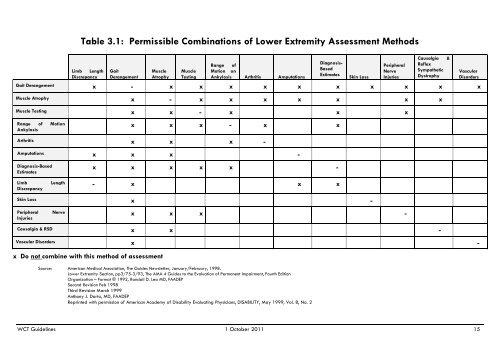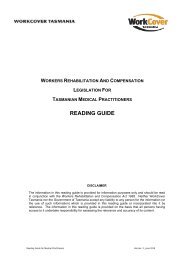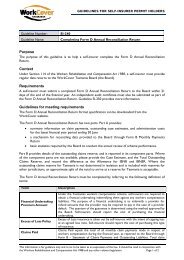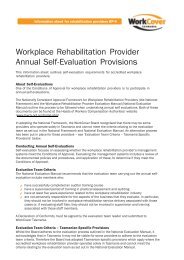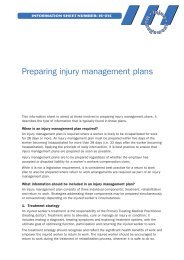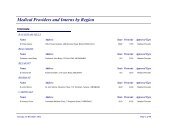Guidelines for the assessment of permanent impairment Version 3
Guidelines for the assessment of permanent impairment Version 3
Guidelines for the assessment of permanent impairment Version 3
Create successful ePaper yourself
Turn your PDF publications into a flip-book with our unique Google optimized e-Paper software.
Table 3.1: Permissible Combinations <strong>of</strong> Lower Extremity Assessment MethodsLimb LengthDiscrepancyGaitDerangementMuscleAtrophyMuscleTestingRange <strong>of</strong>Motion onAnkylosis Arthritis AmputationsDiagnosis-BasedEstimatesSkin LossPeripheralNerveInjuriesCausalgia &ReflexSympa<strong>the</strong>ticDystrophyGait Derangement x - x x x x x x x x x xMuscle Atrophy x - x x x x x x xMuscle Testing x x - x x xVascularDisordersRange <strong>of</strong> MotionAnkylosisx x x - x xArthritis x x x -Amputations x x x -Diagnosis-BasedEstimatesx x x x x -LimbDiscrepancyLength- x x xSkin Loss x -PeripheralInjuriesNervex x x -Causalgia & RSD x x -Vascular Disorders x -x Do not combine with this method <strong>of</strong> <strong>assessment</strong>Source: American Medical Association, The Guides Newsletter, January/February, 1998.Lower Extremity Section, pp3/75-3/93, The AMA 4 Guides to <strong>the</strong> Evaluation <strong>of</strong> Permanent Impairment, Fourth EditionOrganization – Format © 1992, Randall D. Lea MD, FAADEPSecond Revision Feb 1998Third Revision March 1999Anthony J. Dorto, MD, FAADEPReprinted with permission <strong>of</strong> American Academy <strong>of</strong> Disability Evaluating Physicians, DISABILITY, May 1999, Vol. 8, No. 2WCT <strong>Guidelines</strong> 1 October 2011 15


